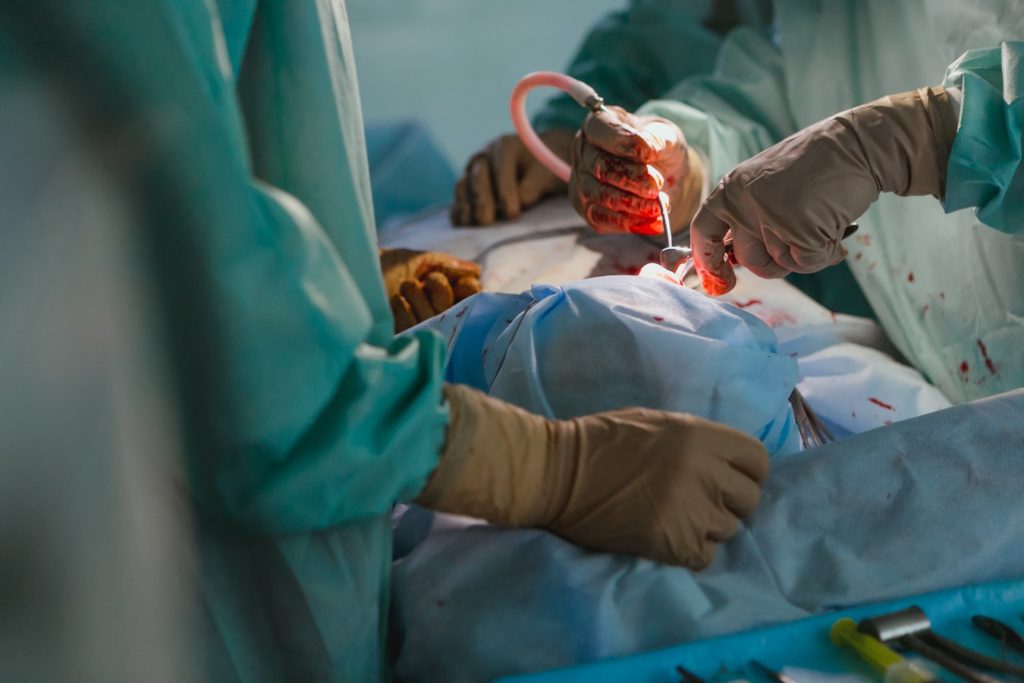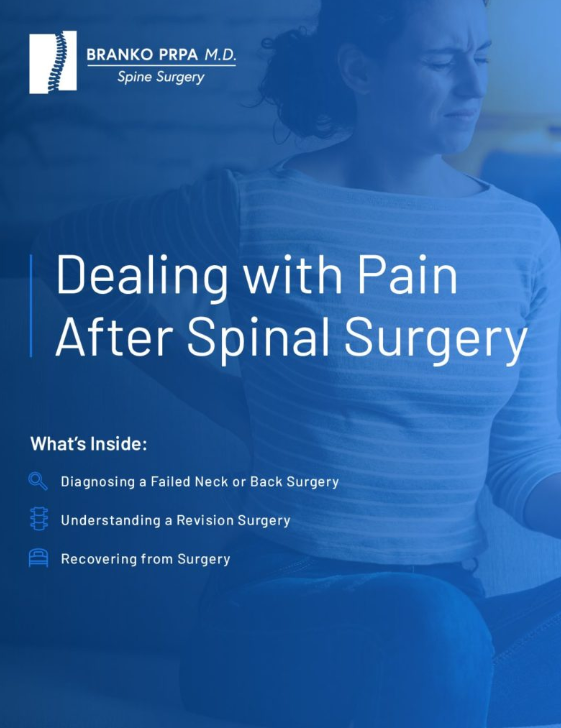What is Revision Surgery?

You’ve been here before. This is all too familiar. The chronic pain, shooting down your arm or leg, the inability to complete everyday tasks.
After years of simply managing the pain, you were hopeful that the surgery would be the end all. Nonetheless, here you are, with similar symptoms and very little relief. After months of pain management, rehabilitation, physical therapy, and evaluations of your conditions, the doctors have recommended revision surgery. But what exactly is Revision Surgery and what hope do you have for recovery this second time around?
A revision surgery is a procedure to correct a previous operation that either failed to relieve pain from your initial condition or caused further internal complications due to a misdiagnosis, surgeon error, lack of fusion, infection, hardware malfunction, or lack of recovery following a previous surgery. The spine is one of the most complex parts of your body affecting the functionality of both the skeletal and nervous systems with 33 small irregular shaped bones protecting the vital job of the spinal cord. This means that a spinal surgery complication is unfortunately a tricky situation and should be addressed by an experienced specialist in revision surgery.
Depending on the type of initial surgery you underwent and your current symptoms, a revision surgery specialist will determine the best course of diagnostic imaging and tests to correctly determine the cause of your pain after surgery. If another doctor has done any recent post-op imaging, the specialist may ask to see these but will most likely still want to do his/her own diagnostic testing for a full picture of your past surgery and current conditions. Some complications like loose screws or infection may require an immediate re-entering, which should be addressed by a revision surgeon who specializes in tending to an already tender surgical site.
Revision Diagnosis
Diagnosis for a revision surgery will appear similar to what you encountered before your first surgery and may include a variety of imaging based on your past surgeries. For example, a second back surgery may begin with a CT scan to locate a fracture or lack of fusion, an MRI will help find nerve compression or presence of a herniated disc, an X-ray can observe the alignment and hardware implant, a bone scan could identify an infection, and finally the EMG can determine nerve functionality.
Once the surgeon has diagnosed the source of your current discomfort he/she may confirm your need for a revision surgery for one of the following procedures:
Revision Discectomy
The original procedure for a herniated disc only removes part of the vertebrae supposedly causing pain or numbness, however a doctor may recommend a revision discectomy if he/she determines that more of the bone needs to be shaved in order to fully relieve your pain. Removal of pieces of a herniated disc to relieve compression on a nerve or spinal cord is often done through microdiscectomy for small herniations, which is minimally invasive. A 2015 study on lumbar discectomy showed that though the first revision surgery resulted in increased quality of life for most, a second back surgery revision had disappointing results. Suggesting if a secondary revision surgery is needed that conservative treatment and pain management may be a better solution depending on your doctor’s feedback. A revision surgery specialist will be able to provide you with the best diagnosis and solution for a recurring herniation.
Revision Fusion
Unfortunately, a herniated disc can often be beyond repair from a revision discectomy and unable to be remedied due to degeneration or stenosis. In this instance, a complete fusion of the area causing discomfort may be an option your doctor discusses with you. If you have already had a fusion surgery, and your doctors diagnose your post op pain as pseudarthrosis (a lack of proper fusion) your doctor may still recommend an additional fusion revision. Fusion relies on the bones to naturally fuse and heal together, however a variety of causes including smoking, diabetes, obesity, age, nutrition, and hardware may result in failure to fuse on their own. About 45-56% of revisions are often due to pseudarthrosis, so it’s crucial to make sure you adhere to your doctor’s thorough recovery instructions to improve your chance for a successful fusion.
Epiduroscopy
This surgery involves the removal of scar tissue build up that is causing pain months following surgery. Scar tissue is a necessary and inevitable reaction to surgery, however an excessive build up can attach to and compress surrounding nerves. An Epiduroscopy procedure allows the revision surgeon to see directly into the irritated area, remove adhesions and fibrosis with a laser, and administer local steroids to decrease inflammation and detach the nerve from the scar tissue. The leading beneficial aspect of this approach is its precision. However, an additional procedure brings additional risk for scar tissue, so it’s important to have a specialist perform this procedure and advise you on best practices to prevent scar tissue this time around.
Foraminoplasty
Your doctor will often take the least invasive approach possible in your revision surgery. Foraminoplasty is an increasingly preferred procedure that involves a small incision and tiny surgical tools to access a specific portion of the spine with minimal impact to surrounding muscles and tissues. This approach may be discussed with you in the event of a herniation, bone spur, stenosis, or nerve compression depending on the severity of your symptoms and accessibility to the source. Foraminoplasty has a 90% success rate and is highly recommended for older patients.
Spinal Hardware Removal & Revision
In the event that your body has reacted negatively to any hardware installed during your previous surgery, you may begin to experience pain due to an infection. As your body rejects the metal implant, screws may loosen and need to be addressed immediately. A revision surgeon will remove the hardware and treat the infection with antibiotics. Additionally, preventative measures can be taken to prevent infection with antimicrobial coating of screws through this revision surgery.
Surgery in itself is always a risk with possible complications. Each body is unique and each surgery is also unique, so the broad spectrum of possible outcomes is difficult to access. Revisiting a surgical site where there is already distress and complications is a very complex and multi-faceted surgical procedure and should be done by a doctor familiar with revision surgeries. Some of the above procedures have better results than others. A doctor that properly diagnoses the cause of your pain and manages your recovery is crucial for a revision surgery success. If you haven’t been diagnosed and evaluated by a revision surgery specialist, schedule an appointment with Dr. PRPA before committing to a revision surgery.

